In 2004, I started a collaboration with the Woman’s crafts cooperative in Ranthambore ; a delightfull journey that will bring me back to the place and the people regularly over the years....2007, 2009, 2014
. excerpts from the book The Freedom of Having Nothing, Ecodesigner and Modern Nomad
The Dastkar Ranthambore Kendra (= center) is off the main road of Sawai Madhopur town, on land bought by the Dastkar society. Their projects began in the nearby villages surrounding the Ranthambore National Park. The 400-square-kilometer national park is one of the finest natural tiger habitats in the world, but when the park was officially created back in the 1980s the villagers were resettled just outside the park, losing their homes, access to their wood, water and traditional farming lands. Their ancestors had lived for centuries in the area.
Lovely embellishments, all made by the women, cover the Kendra’s outside walls. The inside walls are painted ochre from the ground up to waist height, then white all the way to the ceiling. The women have made highly detailed, small relief mandanas (frescoes), using mirror work and hand-drawn images of themselves and their environment, all done in a primal design style. I feel touched; this is like entering a private world, offered in full trust to visitors and the universe.
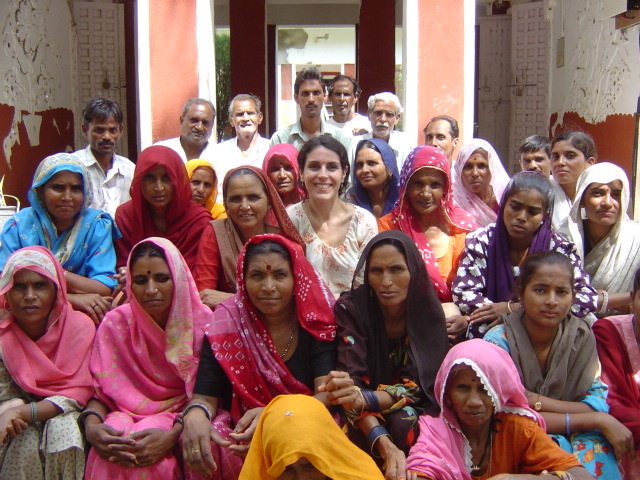
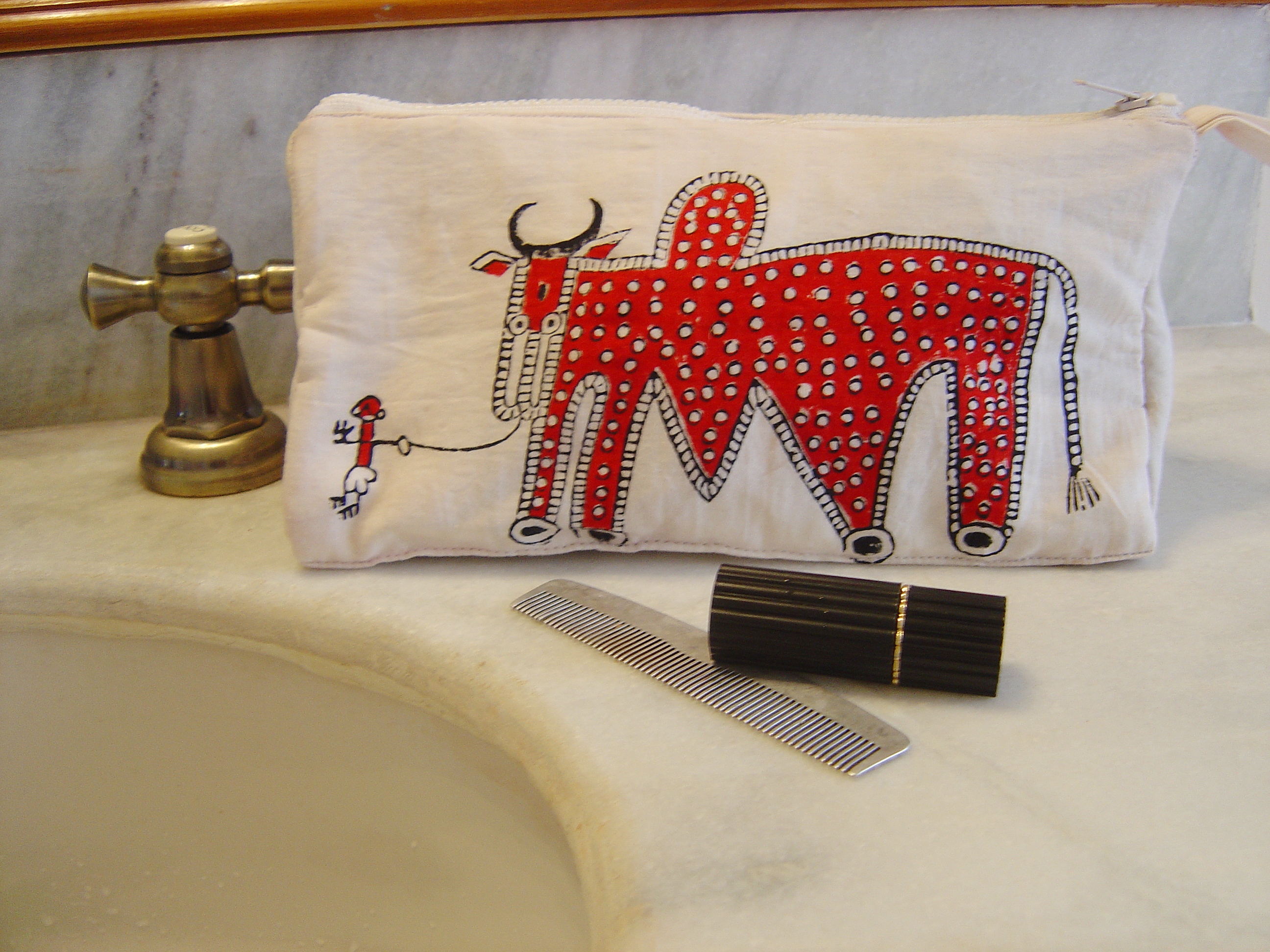
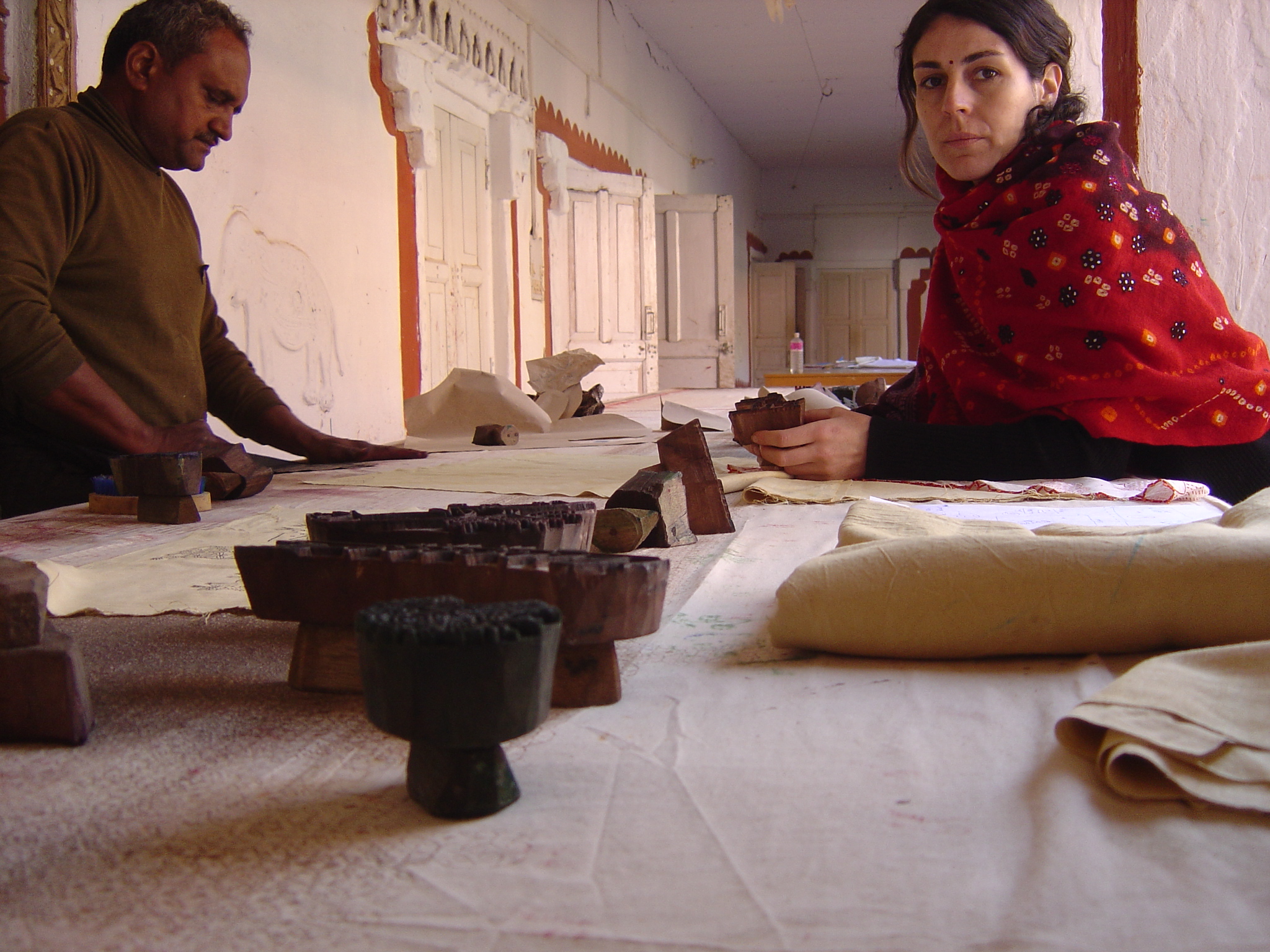
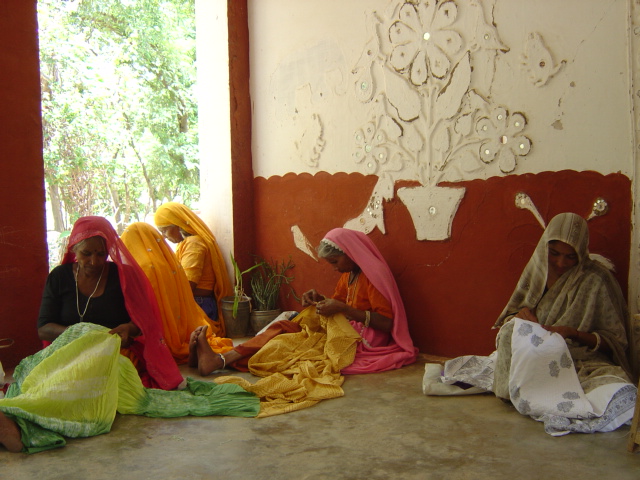
Babulal-ji is an out-of-work hand block printer. Dastkar found him while searching for locally produced fabric. He has a wonderful collection of old block designs, handed down through his family from the time Sawai Madhopur was a famous indigo block-printing center. Dastkar has encouraged Babulal-ji to restart his printing business, using traditional alizarin (a deep red pigment from the roots of the madder plant) and other vegetable dyes.
The Kendra’s storage area is an Ali Baba cave, with piles and piles of hand-dyed and printed fabrics in rich colors and designs. A ‘library’ of hand-carved, wooden block printing stamps fill an entire room, exquisite objects depicting animals. Ujwala explains the long process of making stamped fabrics: the cutting, the washing, the drying of the raw cotton fabric in the sun … printing with the wooden blocks, washing again, steaming in a big drum of boiling water over a fire to fix the colors, washing again, drying in the sun … finally, stretching the fabric. Using natural dyes makes the process even longer. To produce black, chunks of iron are placed in a pot with jaggery (sugar molasses) for a month. Here, the tasks are done by hand – not machine-made like most things in our western culture – and a mundane chore to produce clothes for everyday life and survival. Here, the work is worship and a prayer: giving their time with patience and love, repeating the same lengthy process over and over again.
Wildlife mandanas, painted by the villagers using white natural powder, cover the outside walls of their houses: tigers, peacocks, elephants, cows, bulls, crocodiles, snakes, deer, antelopes. Local artisans were sent to the houses to make block prints of these mandanas, so the fabrics eventually sold to the outside world with these images will remain exclusive to this village.
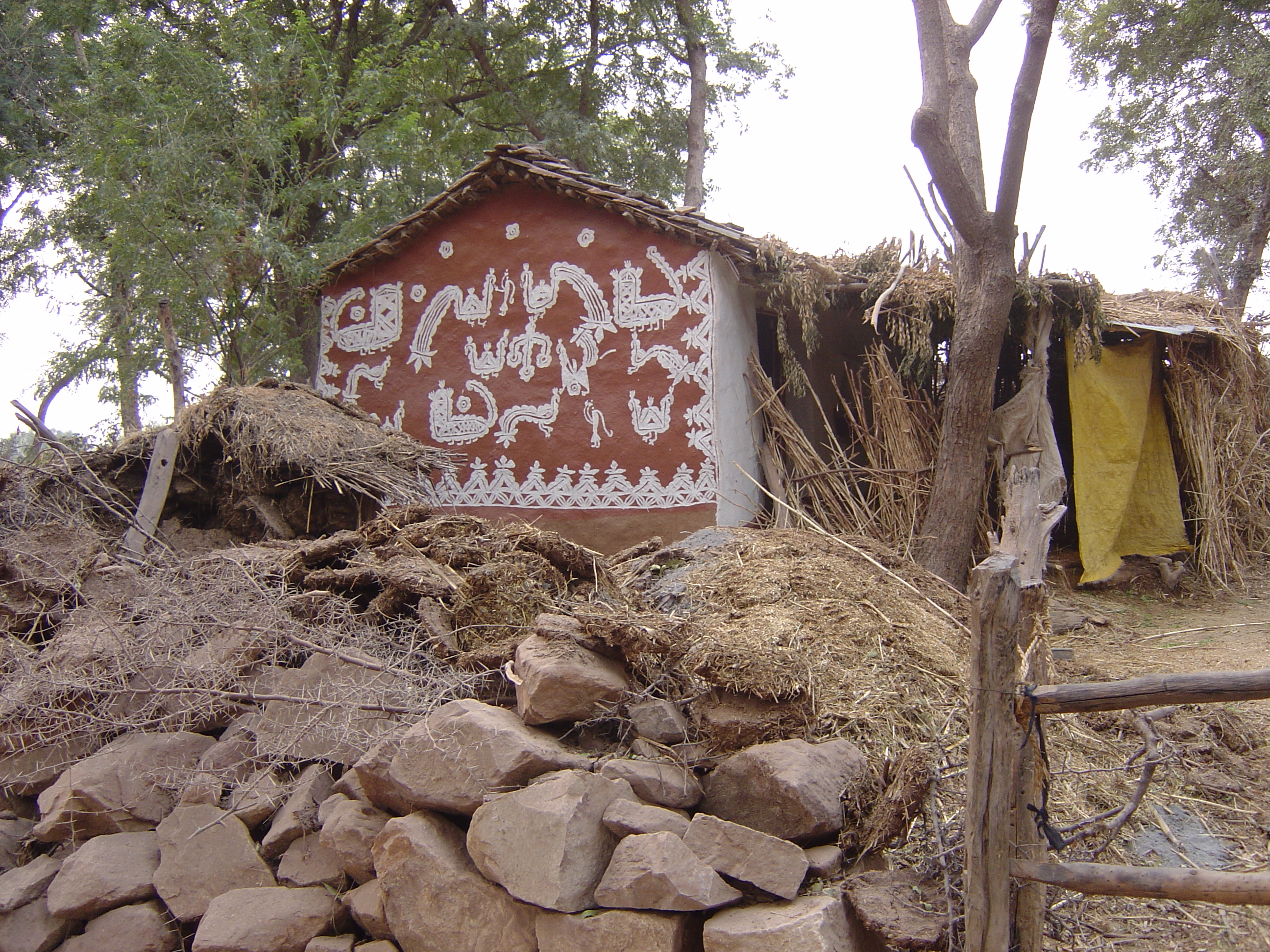
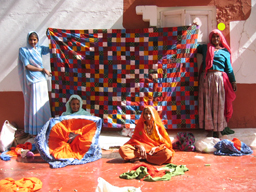
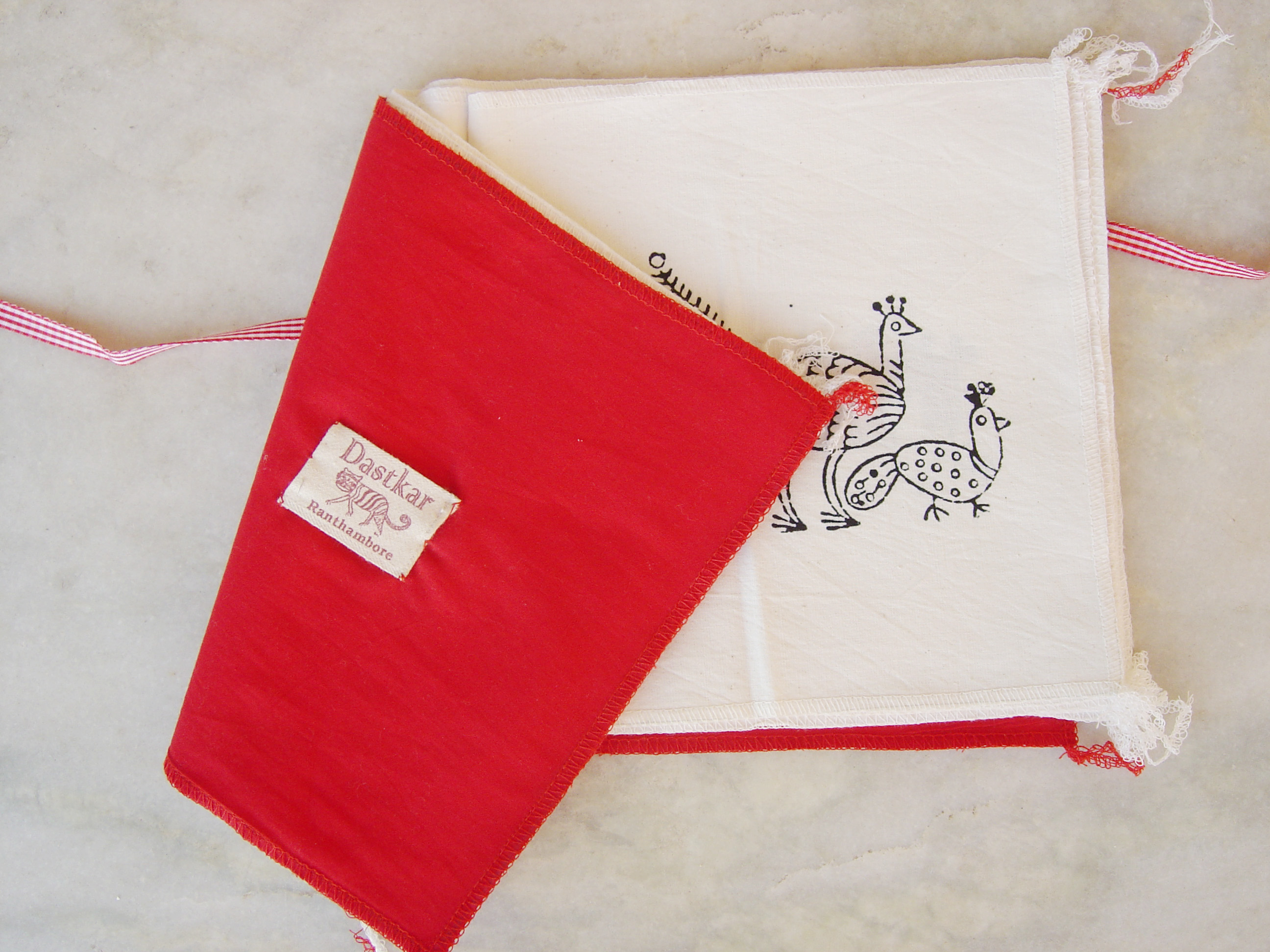
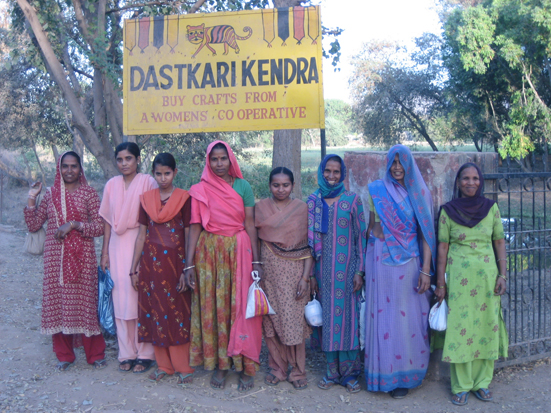
A new hotel has just opened near Ranthambore National Park and the owner, a friend of Dastkar, asks me to develop a range of prints for him. (...) Finally, I produce cushions for the outdoor setting, duvet covers, tableware for the restaurant – a completely new type of assignment for me and I’m learning a lot.
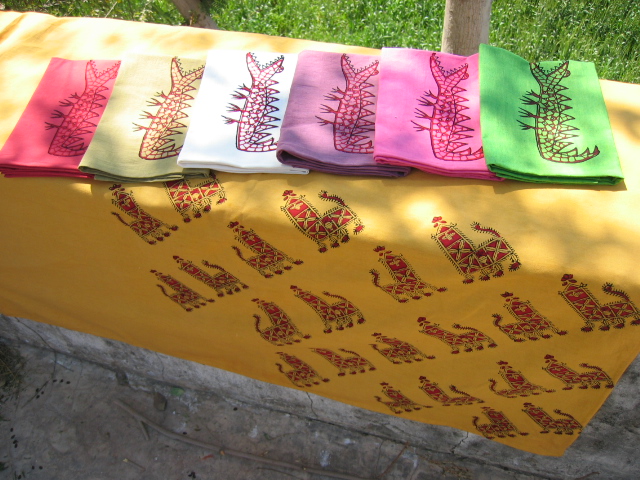
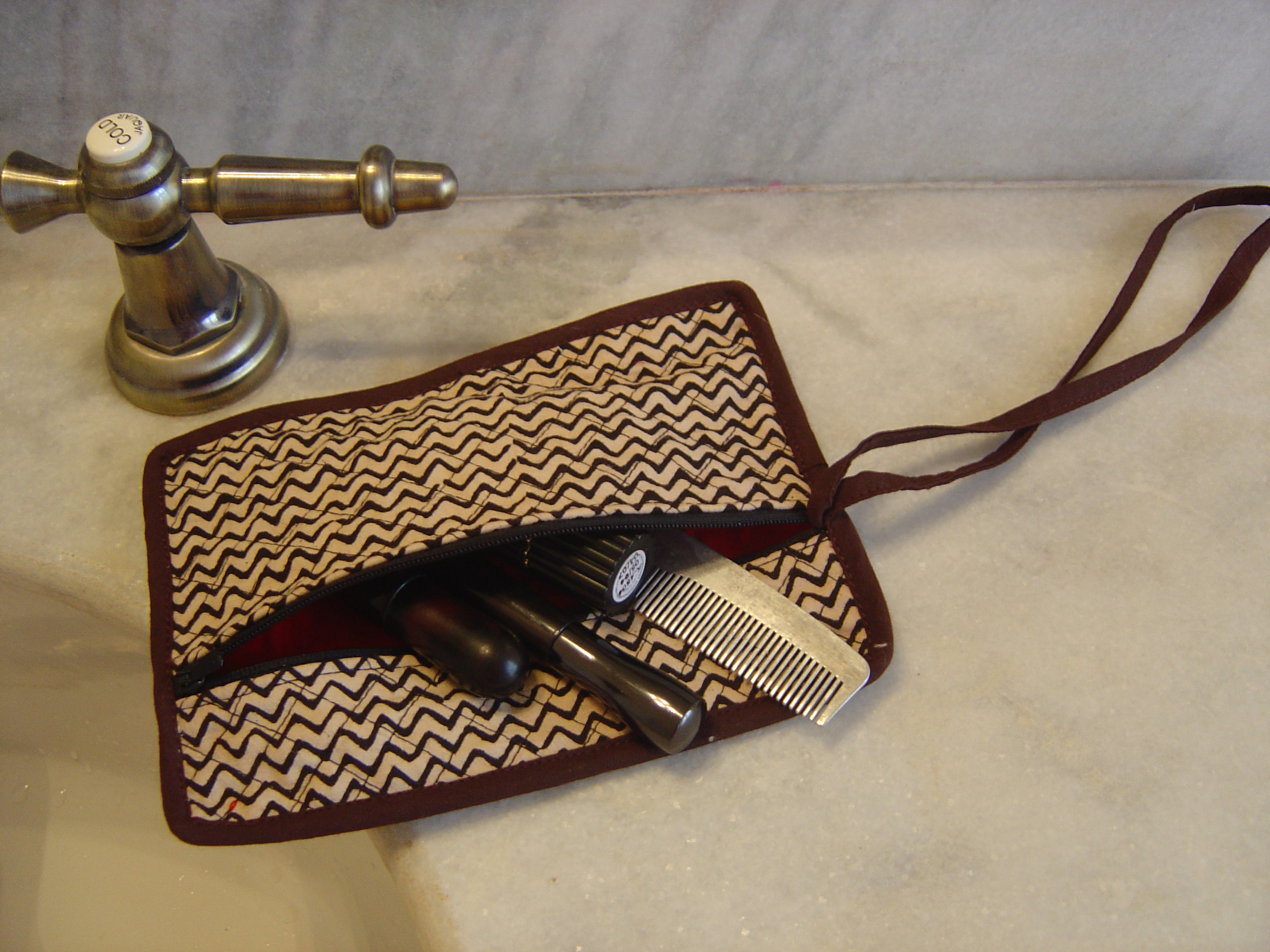
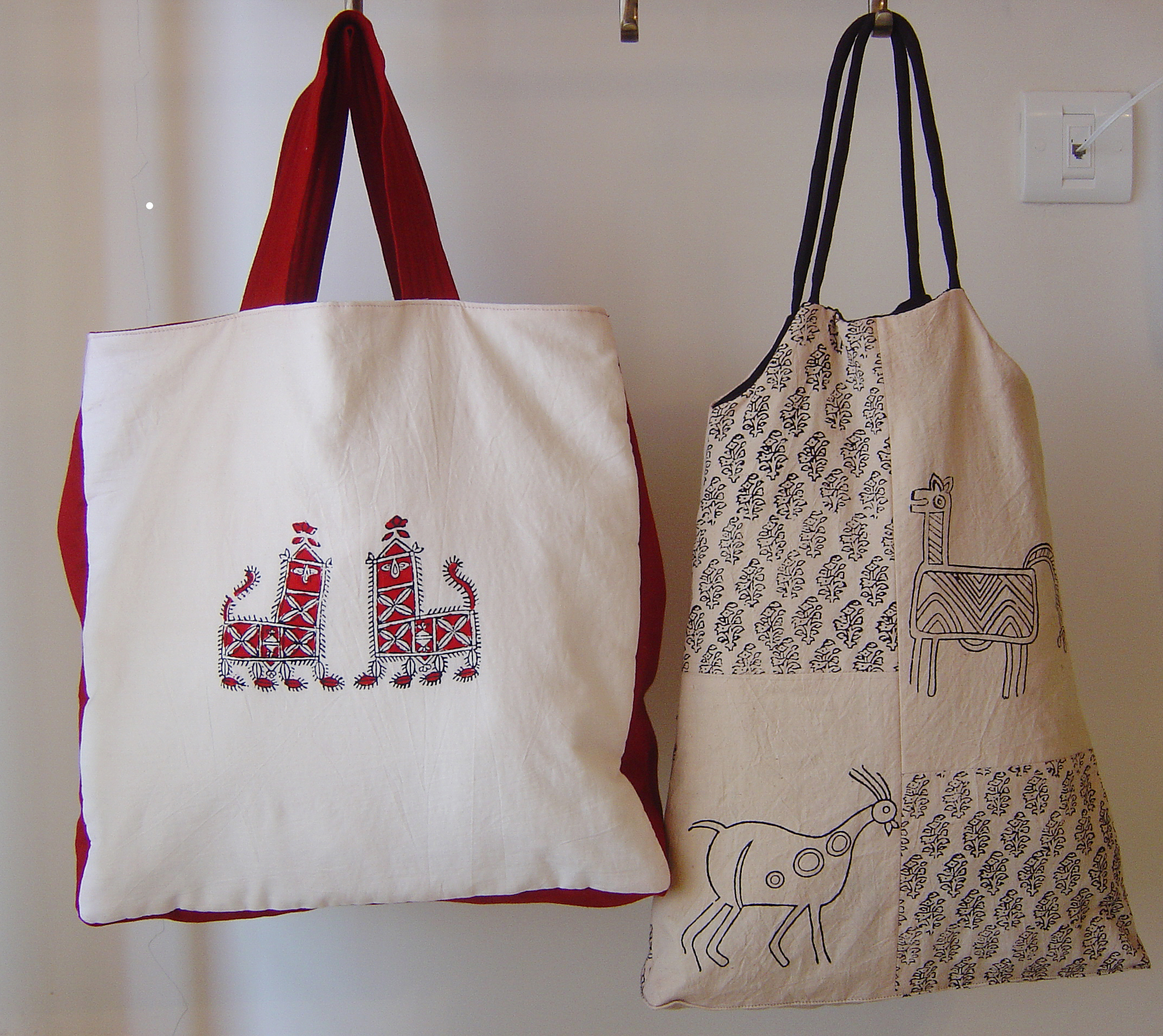
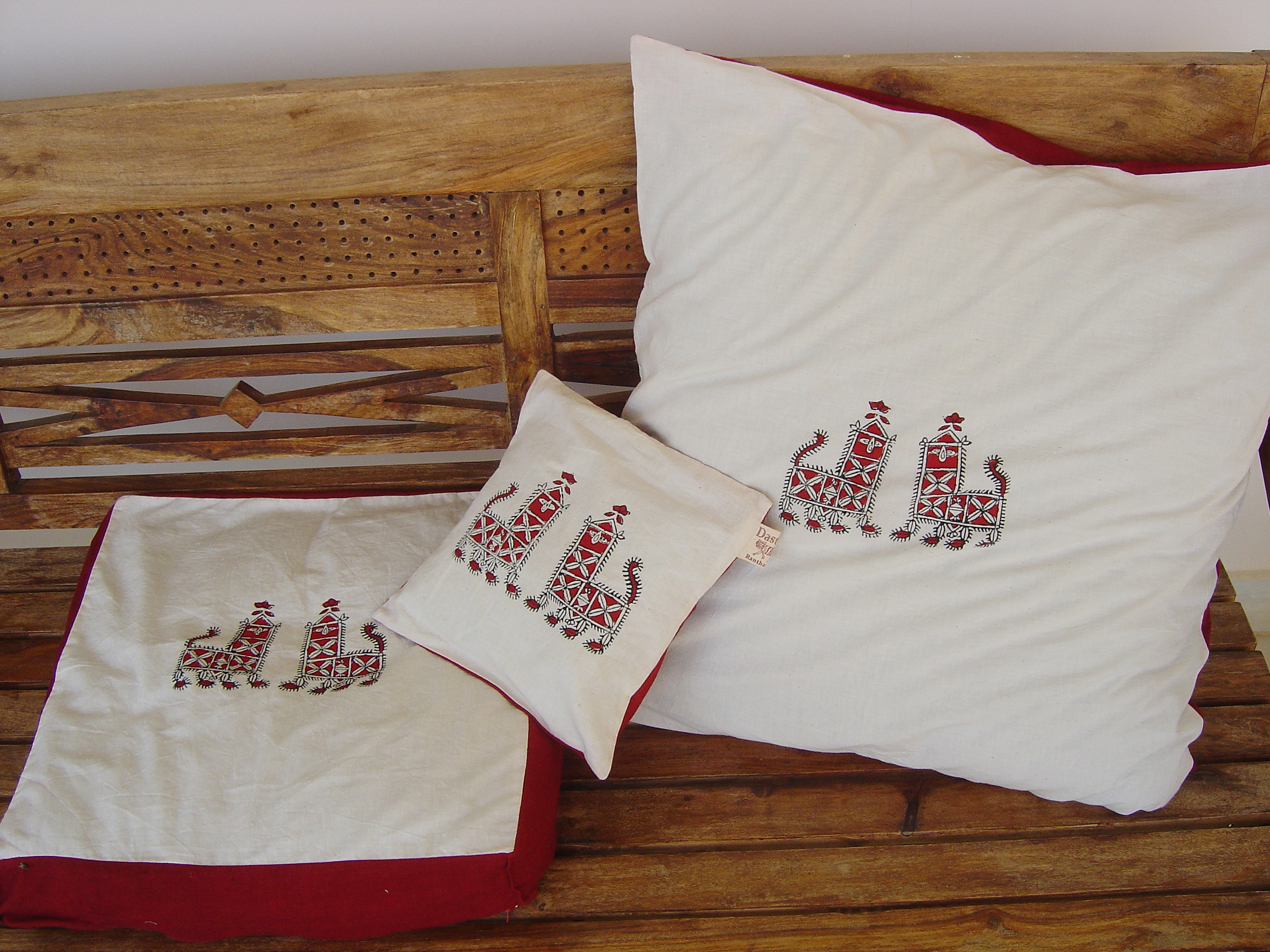
For three weeks I stay at the Ranthambore cooperative, witness to the deprivation and archaic life of the craftworkers living in this region, these lengthy work processes as if time has no value. No electricity, no running water, no gas, no car. What would their ecological footprint be? And yet, beauty comes from this place. Every person I encounter breathes a dignity and pride in what they make. This has been an experience out of time, out of this world. I am deeply touched. A piece of my heart remains when I leave the Kendra and the women, but I know I will be back.